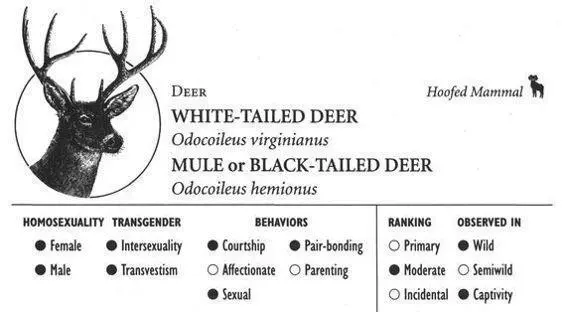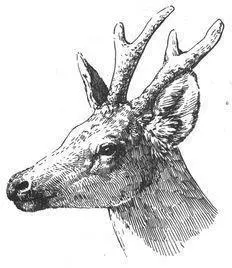Marmontel, M. (1995) “Age and Reproduction in Female Florida Manatees.” In T. J. O’Shea, B. B. Ackerman, and H. F. Percival, eds., Population Biology of the Florida Manatee, pp. 98–119. Information and Technology Report 1. Washington, D.C.: U.S. Department of the Interior.
Moore, J. C. (1956) “Observations of Manatees in Aggregations.” American Museum Novitates 1811:1–24.
*Nair, R. V., R. S. Lal Mohan, and K. Satyanarayana Rao (1975) The Dugong Dugong dugon. ICAR Bulletin of the Central Marine Fisheries Research Institute no. 26. Cochin, India: Central Marine Fisheries Research Institute.
Preen, A. (1989) “Observations of Mating Bevavior in Dugongs (Dugong dugon ).” Marine Mammal Science 5:382-87.
*Rathbun, G. B., J. P. Reid, R. K. Bonde, and J. A. Powell (1995) “Reproduction in Free-ranging Florida Manatees.” In T. J. O’Shea, B. B. Ackerman, and H. F. Percival, eds., Population Biology of the Florida Manatee, pp. 135-56. Information and Technology Report 1. Washington, D.C.: U.S. Department of the Interior.
Reynolds, J. E., III. (1981) “Aspects of the Social Behavior and Herd Structure of a Semi-Isolated Colony of West Indian Manatees, Trichechus manatus.” Mammalia 45:431-51.
———(1979) “The Semisocial Manatee.” Natural History 88(2):44-53.
Reynolds, J. E., III., and D. K. Odell (1991) Manatees and Dugongs. New York: Facts on File.
*Ronald, K., L. J. Selley, and E. C. Amoroso (1978) Biological Synopsis of the Manatee. Ottawa: International Development Research Center.

WHITE-TAILED DEER
IDENTIFICATION: A medium-sized deer (approximately 3 feet tall at shoulder) with a white undertail and multipronged antlers that sweep forward. DISTRIBUTION: Southern Canada, United States except Southwest, Mexico south to Bolivia and northeastern Brazil. HABITAT: Varied, from thickets to open country. STUDY AREAS: Welder Wildlife Refuge, Sinton, Texas; Edwards Plateau, Llano County, Texas; subspecies O.v. texanus, the Texas White-tailed Deer.
MULE DEER
IDENTIFICATION: A stocky, grayish deer with a black-tipped tail and antlers that branch into two equal portions. DISTRIBUTION: Western North America, northern Mexico. HABITAT: Semiarid forest, brushlands. STUDY AREAS: Waterton and Banff National Parks, Alberta, Canada; University of British Columbia, Canada; near Fort Collins, Colorado; subspecies O.h. hemionus, the Rocky Mountain Mule Deer, and O.h. columbianus, the Black-tailed Deer.
Social Organization
During most of the year, White-tailed and Mule Deer live in sex-segregated groups: females form groups with other does and their offspring, while males (bucks) live in “bachelor” groups or on their own. During the rutting season, males form short-lived, consecutive “tending bonds” with multiple females—a form of polygamy or “serial monogamy.” Larger cosexual groups may also form during the winter.
Description
Behavioral Expression : Adult male White-tailed Deer sometimes mount each other, as do yearling males (especially during the nonbreeding season); occasionally a younger male mounts an older one during this activity. Homosexual mounts (like heterosexual ones) are usually preceded by one male nuzzling the other’s rear end, and sometimes one male mounts another twice in a row; occasionally the mounting buck has an erection. The mount may be briefer than a male-female copulation, but the same duration as heterosexual nonreproductive mounts (5-15 seconds, as opposed to 15-20 seconds). Yearling Mule Deer occasionally mount each other during SPARRING MATCHES—ritualized, nonviolent contests in which the bucks lock horns. During this activity one male might assume a stiffened posture, similar to a female’s before copulation. The other male—sometimes younger or smaller than the first—then mounts him, after first licking and smelling the special scent-producing glands on his hind legs. Female Mule Deer also sometimes mount each other when in heat; in addition, some does court other females using a chasing sequence known as RUSH COURTSHIP. In this behavior (which also occurs in heterosexual contexts), they race toward another female, stopping abruptly and sometimes pawing the ground, pacing, leaping into the air while twisting their body, or running in circles or figure eights; this causes the other doe to become excited and aroused. Adult male White-tailed Deer frequently develop “companionships” or bonds with one (or occasionally two) other adult males in their buck groups; male companions are generally not related to each other. These strong attachments constitute the stable “core” of each buck group, and although male companions typically separate during the breeding season, they usually resume their bonds once mating is over.
An extraordinary form of transgendered deer occurs in some populations of White-tails. These animals, which are genetically male but actually combine characteristics of both males and females, are sometimes called VELVET-HORNS because their antlers are permanently covered with the special “velvet” skin that in most males is shed after the antlers have grown. Their antlers are usually only spikes (without the extensive branching of other males’ antlers) and they slope backward and sometimes have enlarged bases. Physically, velvet-horns often have body proportions and facial features more typical of does, while their testes are small and undeveloped (and in fact the animals are infertile). A similar type of transgender is found among Mule Deer, where the animals are known as CACTUS BUCKS owing to the distinctive shape of their antlers (which sometimes also have elaborate spikes, prongs, and asymmetrical growths). Velvet-horns usually form their own social groups of three to seven animals and live separately from both does and nontransgendered males. In fact, they are often harassed and attacked by other deer. Nontransgendered White-tails (both does and bucks of all ages, even fawns) threaten velvet-horns who try to approach them—forcing them to remain no less than ten feet away—while bucks may actively charge velvet-horns to drive them away. When threatened, velvet-horns flee without giving the standard alarm signals of other deer (stamping their feet, snorting or whistling, and raising their tails). Sometimes, groups of up to six bucks “gang up” on a velvet-horn, chasing and even violently attacking it by gashing its rump with their antlers. As a result, velvet-horns are extremely wary around other deer, venturing near feeding areas cautiously and always remaining in groups on the periphery, or else refusing to approach at all when other deer are present. Interestingly, velvet-horns are almost always in superior physical condition compared to nontransgendered males, precisely because they do not breed. The rutting season is extremely taxing on breeding bucks, who rarely eat and may lose up to a quarter of their body weight. In contrast, velvet-horns consistently have excellent body fat deposits and are in prime shape.
A male White-tailed Deer mounting another buck

A transgendered “velvet-horn” White-tailed Deer

Two types of gender-mixing females also occur among White-tailed and Mule Deer, both bearing antlers (females in these species do not usually have antlers). In one type, the antlers are similar to those of velvet-horns: they are permanently covered in velvet, are never shed, and are either spikes or asymmetrically branching. Unlike velvet-horns, such females are usually fertile, mating heterosexually and becoming mothers. The other type is a more complete form of intersexuality: the antlers are hard and polished, more closely resemble those of males in their branching structure, and may even be shed seasonally. These individuals usually combine both male and female sexual traits, such as having the genitalia and/or reproductive organs of both sexes, or partial organs of each sex, or chromosomes of one sex combined with the genitalia of the other.
Читать дальше















